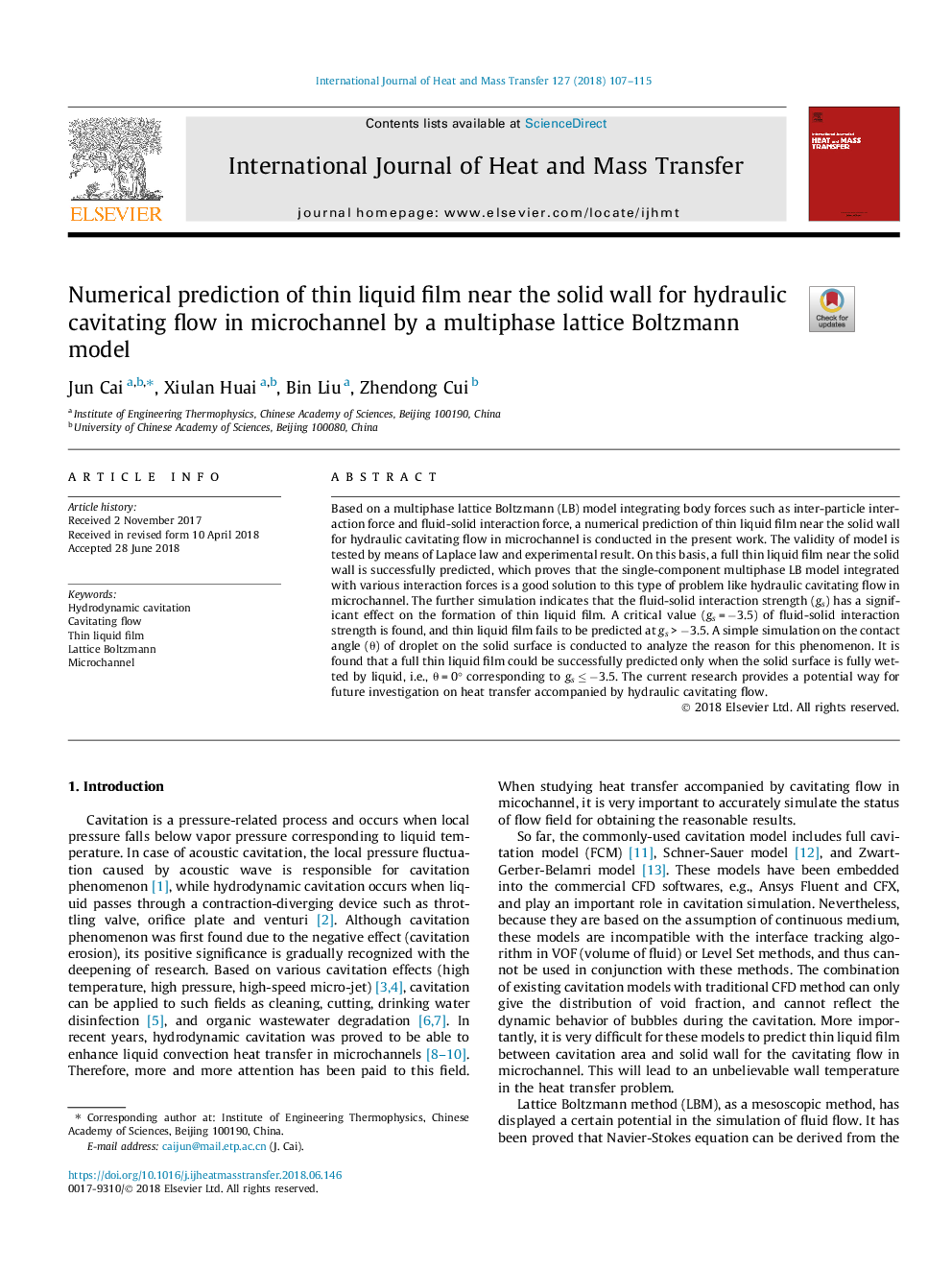| Article ID | Journal | Published Year | Pages | File Type |
|---|---|---|---|---|
| 7053755 | International Journal of Heat and Mass Transfer | 2018 | 9 Pages |
Abstract
Based on a multiphase lattice Boltzmann (LB) model integrating body forces such as inter-particle interaction force and fluid-solid interaction force, a numerical prediction of thin liquid film near the solid wall for hydraulic cavitating flow in microchannel is conducted in the present work. The validity of model is tested by means of Laplace law and experimental result. On this basis, a full thin liquid film near the solid wall is successfully predicted, which proves that the single-component multiphase LB model integrated with various interaction forces is a good solution to this type of problem like hydraulic cavitating flow in microchannel. The further simulation indicates that the fluid-solid interaction strength (gs) has a significant effect on the formation of thin liquid film. A critical value (gsâ¯=â¯â3.5) of fluid-solid interaction strength is found, and thin liquid film fails to be predicted at gsâ¯>â¯â3.5. A simple simulation on the contact angle (θ) of droplet on the solid surface is conducted to analyze the reason for this phenomenon. It is found that a full thin liquid film could be successfully predicted only when the solid surface is fully wetted by liquid, i.e., θâ¯=â¯0° corresponding to gsâ¯â¤â¯â3.5. The current research provides a potential way for future investigation on heat transfer accompanied by hydraulic cavitating flow.
Related Topics
Physical Sciences and Engineering
Chemical Engineering
Fluid Flow and Transfer Processes
Authors
Jun Cai, Xiulan Huai, Bin Liu, Zhendong Cui,
